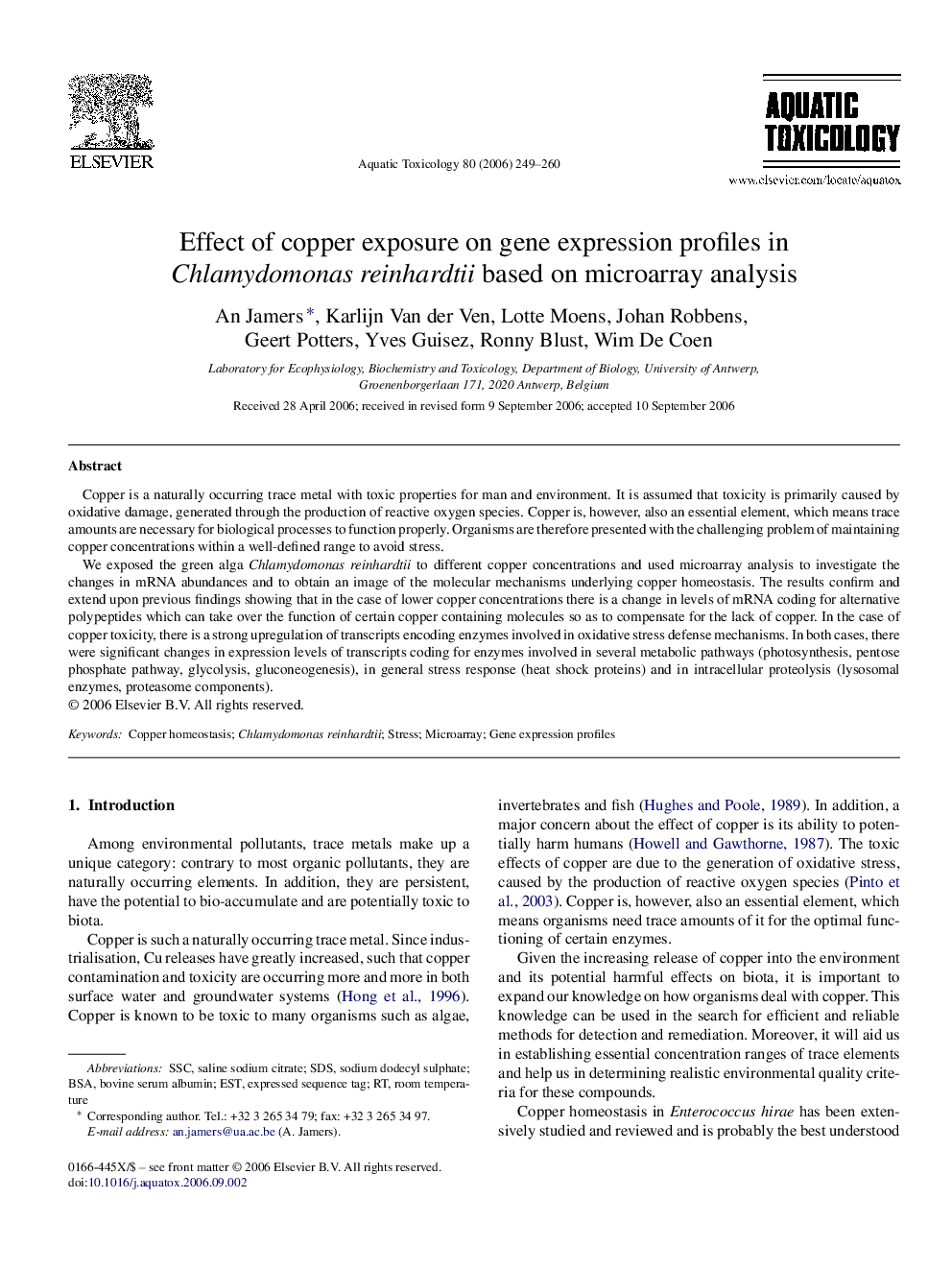| Article ID | Journal | Published Year | Pages | File Type |
|---|---|---|---|---|
| 4531223 | Aquatic Toxicology | 2006 | 12 Pages |
Copper is a naturally occurring trace metal with toxic properties for man and environment. It is assumed that toxicity is primarily caused by oxidative damage, generated through the production of reactive oxygen species. Copper is, however, also an essential element, which means trace amounts are necessary for biological processes to function properly. Organisms are therefore presented with the challenging problem of maintaining copper concentrations within a well-defined range to avoid stress.We exposed the green alga Chlamydomonas reinhardtii to different copper concentrations and used microarray analysis to investigate the changes in mRNA abundances and to obtain an image of the molecular mechanisms underlying copper homeostasis. The results confirm and extend upon previous findings showing that in the case of lower copper concentrations there is a change in levels of mRNA coding for alternative polypeptides which can take over the function of certain copper containing molecules so as to compensate for the lack of copper. In the case of copper toxicity, there is a strong upregulation of transcripts encoding enzymes involved in oxidative stress defense mechanisms. In both cases, there were significant changes in expression levels of transcripts coding for enzymes involved in several metabolic pathways (photosynthesis, pentose phosphate pathway, glycolysis, gluconeogenesis), in general stress response (heat shock proteins) and in intracellular proteolysis (lysosomal enzymes, proteasome components).
